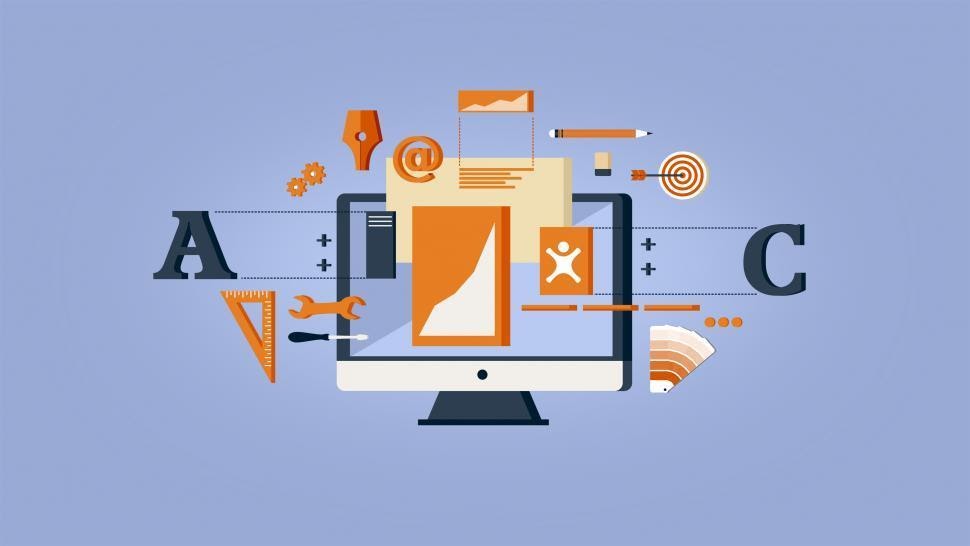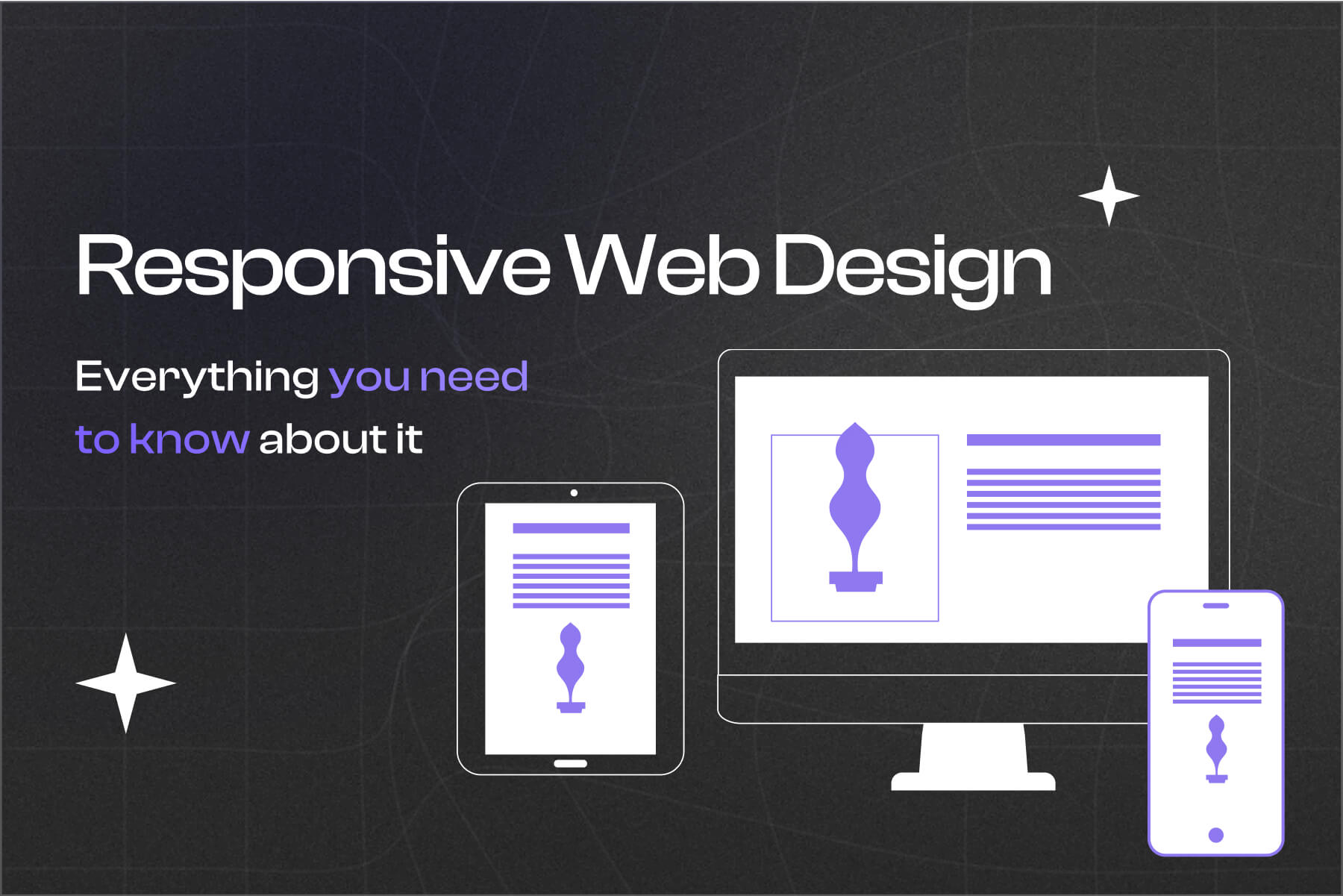The Ultimate Guide to Effective Web Design: Key Principles and Best Practices

Effective web design is essential in today’s digital environment to draw users in and provide a smooth user experience. This tutorial will explore the fundamental ideas, crucial development procedures, and practical resources for accomplishing efficient web design that improves operation and appearance.
1. Essential Guidelines for Efficient Web Design
1.1 Effective Web Design Layout Design
A well-designed layout is essential to a well-designed website. To attain readability and harmony, items must be positioned intelligently. The following are important layout styles that support good web design:
- Grid Layout: Creates an organized foundation, arranging material neatly to promote effective web design. See our Web Design Trends page to learn more about current layout trends.
- Asymmetrical Layout: Challenges established design conventions while upholding sensible web design principles, providing a contemporary and dynamic appearance. See Smashing Magazine for additional information on asymmetrical layouts.
- F-Layout: Enhances effective web design by utilizing people’s natural reading patterns and emphasizing the top and left portions.
1.2 Color Theory: A Practical Guide to Web Design
Effective color palette selection is a basic component of good web design. Think about the following:
- Color Harmony: To guarantee a unified and aesthetically pleasing effective web design, use complementary or comparable color schemes. Use Adobe Color to learn more about color theory.
- Contrast: To improve readability, a key component of good web design is maintaining a high contrast between the text and the background.
- Accessibility: Make sure your well-designed website is usable by those with vision problems using color contrast tools. For further information, see our accessibility guidelines. For efficient design, experiment with color contrast tools such as WebAIM’s Contrast Checker.
1.3 Best Practices for Typography in Efficient Web Design
Because typography affects readability and visual appeal, it is essential to good site design. Important typographic components consist of:
- Font Selection: Pick typefaces that enhance the effectiveness of your website design and represent your business. See Google Fonts for selection guidelines.
- Hierarchy: To create a distinct visual hierarchy in your well-designed website, use a range of font sizes and weights.
- Line Spacing: Effective site design and readability are improved by appropriate line spacing.
2. Crucial Web Design Techniques for Web Development

2.1 Foundations of HTML for Efficient Web Design
The foundation of any successful web design is HTML. Important components consist of:
- Headings: Headings are essential to good web design since they help organize material and improve SEO. Use
See our SEO Basics page for more information on SEO. For a thorough rundown, you may also visit W3Schools HTML Tutorial.
Images: To enhance accessibility in well-designed websites, include tags with informative alt text.
Links: To generate useful navigational links that complement good site design, use elements.
2.2 CSS Styling Methods for Productive Website Development
For efficient visual presentation in web design, CSS is essential. Important methods consist of:
Using media queries to apply responsive design concepts to styles that adjust according to screen size can improve the effectiveness of web design. See our page on Responsive Web Design Tips for additional information on responsive design. For further in-depth information, check out MDN Web Docs on CSS Media Queries.
- Grid and Flexbox Layouts: The foundation of good web design is flexibility and responsiveness, which may be achieved with these contemporary layout principles.
- Animations: Effective web design incorporates CSS animations to provide dynamic components and improve user experience. Visit CSS-Tricks for tutorials on CSS animation.
2.3 JavaScript: Increasing Interactivity for Smarter Website Design
JavaScript improves interactivity, which is a vital component of well-designed websites. Crucial elements consist of:
- Dynamic Content Updates: Enhance the usefulness of well-designed websites by using AJAX to update content without requiring a page reload.
- Form Validation: One essential component of good web design is accurate user input, which may be ensured by using form validation. Visit MDN Web Docs to learn about form validation methods.
- Animations: A website’s ability to draw users in requires the creation of slick, captivating animations.
3. Designing a Responsive Website for Efficient Web Design

3.1 Media Queries for Efficient Website Development
To ensure good site design across all platforms, media queries are essential. Utilize them to make adjustments:
- Layout: To improve successful web design across a range of screen sizes, adjust element sizes and grid layouts.
- Text Size: A key component of good web design is making sure the content can be read on all devices.
3.2 Adaptable Images and Fluid Grids for Efficient Web Design
For a successful, responsive website design, take into account:
- Fluid Grids: To construct flexible layouts, use widths that are dependent on percentages. A List Apart has additional information regarding fluid grids.
- Flexible Images: To preserve good site design, make sure images scale appropriately inside their containers.
3.3 A Mobile-First Strategy for Efficient Web Design
Implementing a mobile-first strategy guarantees a robust user experience, which is fundamental to successful web design. Pay attention to:
- Simplified Layouts: A key component of successful web design is giving mobile users’ needs priority when it comes to content and features.
- Progressive Enhancement: Improve overall effective web design by gradually adding additional functionality for larger displays.
4. Software and Tools for Effective Web Design

4.1 Tools for Designing an Effective Website
Using sophisticated design tools is often necessary for effective web design.
- Figma: An adaptable tool that facilitates successful, collaborative web design for producing mockups and prototypes. Visit the Figma website to learn more.
- Effective web design is aided by Adobe XD’s extensive design and prototyping features. View the features of Adobe XD on the official Adobe website.
- Draw: Perfect for vector graphics and UI design, which enhances the effectiveness of web design.
4.2 Tools for Development in Effective Web Design
The following are necessary resources for efficient web design development:
- Code editors: Sublime Text and Visual Studio Code make it easier to manage and code web design projects effectively. Visit Microsoft’s official website to learn more about Visual Studio Code. Go to Sublime Text’s website for further information.
- Tools for Browser Developers: Make use of these tools to enhance and troubleshoot efficient web design.
4.3 Version Control: The Key to Successful Web Design
- Git and GitHub: Maintaining efficient collaboration and code change management are essential to upholding good web design. Visit the Git Official Site and the GitHub Website to learn more about GitHub and Git.
5. Making Sure That Effective Web Design Is Accessible
5.1 Using Semantic HTML to Create Effective Websites
Effective site design is improved by semantic HTML by:
- Enhancing Accessibility: Make information easier to read for screen readers by incorporating semantic components. See the W3C’s HTML5 Specifications for additional information on semantic HTML.
- Content Organization: For a successful web design, arrange material using elements such as
,
, and
.
5.2 Using Keyboard Navigation in Web Design Effectively
Make sure the layout of your website is keyboard-friendly by:
- Focus Management: Ensure that focus indicators are operational and visible. Visit MDN Web Docs to find out more about focus management.
- Keyboard Shortcuts: Use keyboard shortcuts in your successful web design to make navigating and interacting easier.
5.3 Alt Text for Images in Effective Web Design
Provide descriptive alt text for images to:
- Enhance Accessibility: Ensure visually impaired users can understand the content, improving effective web design. Explore best practices for alt text on WebAIM.
- Boost SEO: Use relevant keywords in alt text to enhance SEO and support effective web design.
5.4 Color Contrast in Effective Web Design
Verify and adjust color contrast to:
- Ensure Readability: Use contrast checking tools to maintain high readability, crucial for effective web design
